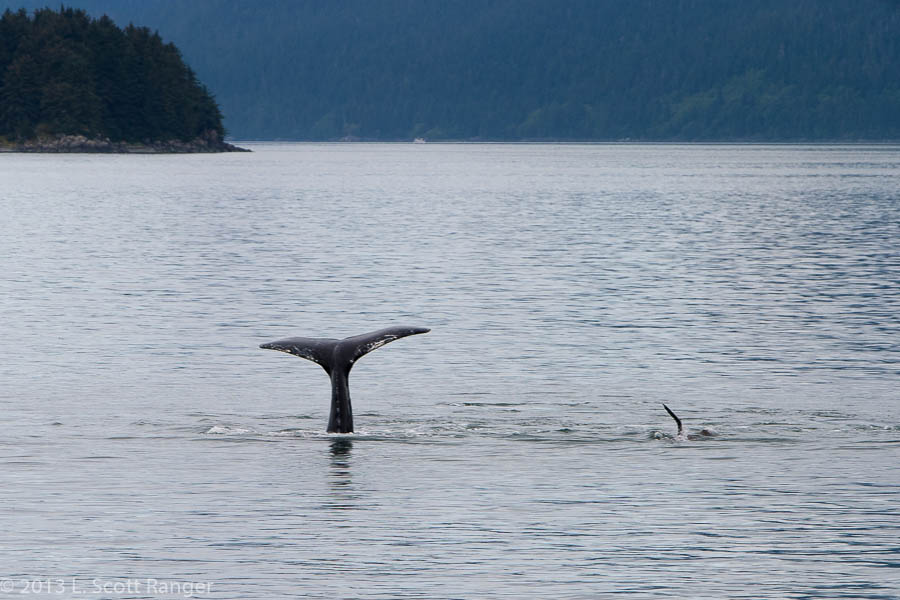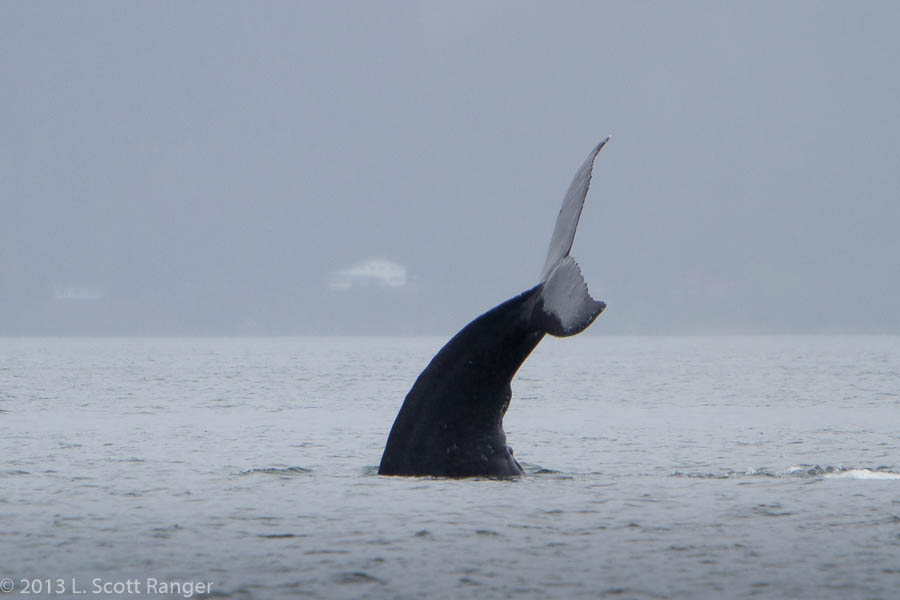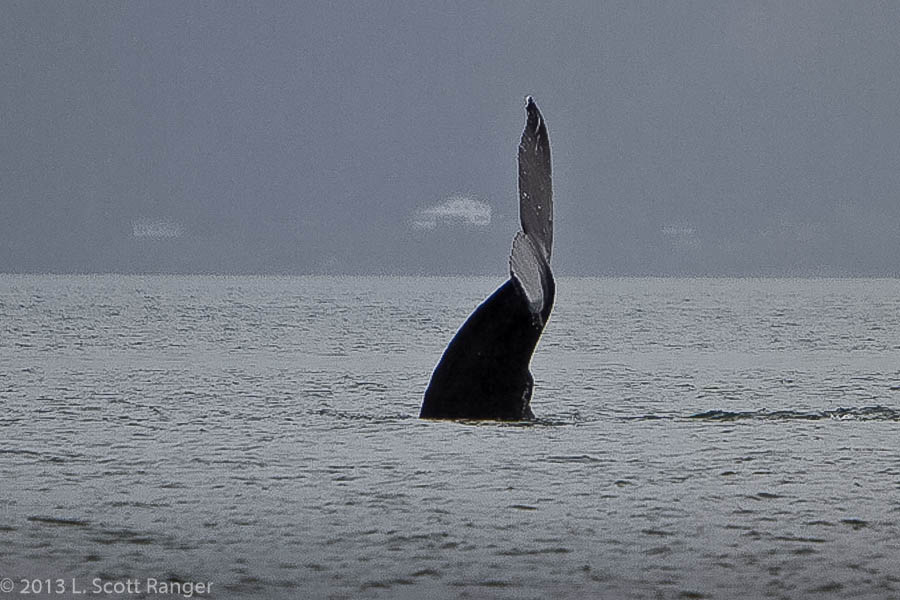Headstand
Also called tail extension. The opposite of a spyhop, here the whale is nearly vertical in the water with head down and tail out of the water. It seems many only consider it a headstand when a large portion of the peduncle is held out of the water so the genital area is exposed. The tail is often held straight up high out of the water for some moments or is slowly moved about without rising or sinking. With the opacity of our water, I cannot see if the pectoral fins are used to maintain this position. A quick search of headstand photos produces images such as mine with only one underwater where the pectoral fins are held out away from the body at a slight backward angle.
I’ve only seen one adult whale do a headstand in our waters, and the top right photo taken July 13, 2011 in the waters of northern Stephens Passage at south Shelter Island. The unidentified whale held this position for nearly two minutes before sliding back into the water and moving off. The lower photos are of an unidentified juvenile from September 9, 2009 as part of a sequence of nine photos I took over a period of one minute. No tail slapping was involved with this headstand. The top right photo is from September 6, 2009 in Favorite Channel near the southeast corner of Shelter Island. This juvenile is engaged in some very special behavior. The flippers to the right are from a juvenile Steller’s sea lion. The two are involved with what I can only call “play”, a very anthropomorphic term. The sea lion swims to the area of the flukes of the whale, the whale flips its flukes up and throws the sea lion in the air. The whale then does the handstand. The sea lion comes back and the whale throws it in the air a second time! I’m so stunned by what I’m seeing I take very few photos and so don’t have the throws documented.
This begs the question of “why do they headstand?” Since their eyes are below the surface, ruling out observing the above surface environment can be completely ruled out. Does the vertical position give them a panoramic view of the sub-surface environment? Probably, but since I cannot see but a few yards in the plankton-rich water, I assume the whale has a similar limitation to its sight. This seems to rule out the idea the whales are looking about their aquatic realm.
Once again, with juveniles, my fallback position is they are exploring their bodies and learning what they can do with them. Since adults already know how to do this, it would be sheer speculation for me to hazard any guess as to why they do headstands.
Most headstands I’ve seen are by juveniles, and the vast majority of them are part of a short interlude in a series of tail slaps. This single adult did no tail slaps and only this single, rather short, headstand.
I’ve only seen one adult whale do a headstand in our waters, and the top right photo taken July 13, 2011 in the waters of northern Stephens Passage at south Shelter Island. The unidentified whale held this position for nearly two minutes before sliding back into the water and moving off. The lower photos are of an unidentified juvenile from September 9, 2009 as part of a sequence of nine photos I took over a period of one minute. No tail slapping was involved with this headstand. The top right photo is from September 6, 2009 in Favorite Channel near the southeast corner of Shelter Island. This juvenile is engaged in some very special behavior. The flippers to the right are from a juvenile Steller’s sea lion. The two are involved with what I can only call “play”, a very anthropomorphic term. The sea lion swims to the area of the flukes of the whale, the whale flips its flukes up and throws the sea lion in the air. The whale then does the handstand. The sea lion comes back and the whale throws it in the air a second time! I’m so stunned by what I’m seeing I take very few photos and so don’t have the throws documented.
This begs the question of “why do they headstand?” Since their eyes are below the surface, ruling out observing the above surface environment can be completely ruled out. Does the vertical position give them a panoramic view of the sub-surface environment? Probably, but since I cannot see but a few yards in the plankton-rich water, I assume the whale has a similar limitation to its sight. This seems to rule out the idea the whales are looking about their aquatic realm.
Once again, with juveniles, my fallback position is they are exploring their bodies and learning what they can do with them. Since adults already know how to do this, it would be sheer speculation for me to hazard any guess as to why they do headstands.
Most headstands I’ve seen are by juveniles, and the vast majority of them are part of a short interlude in a series of tail slaps. This single adult did no tail slaps and only this single, rather short, headstand.



